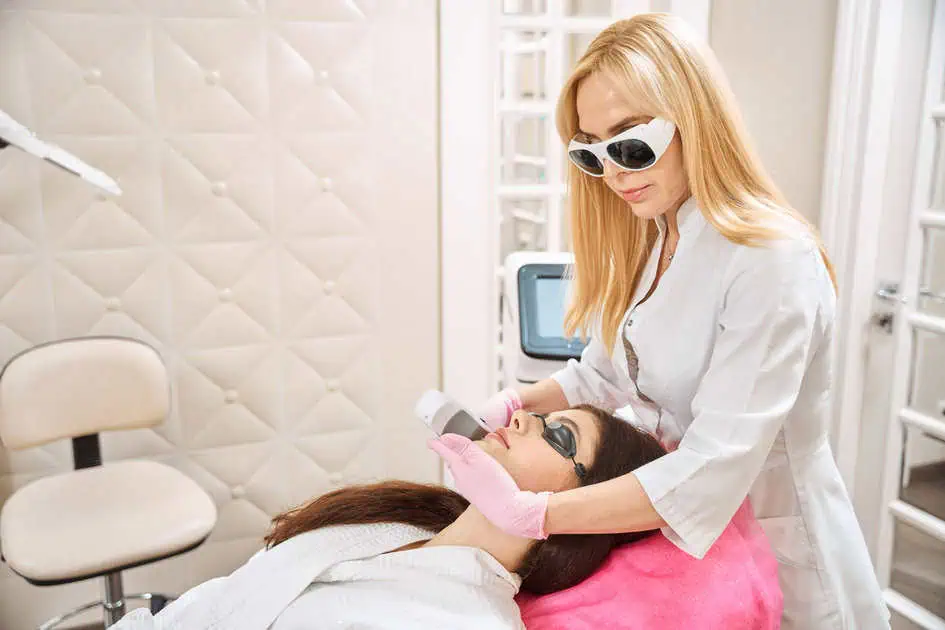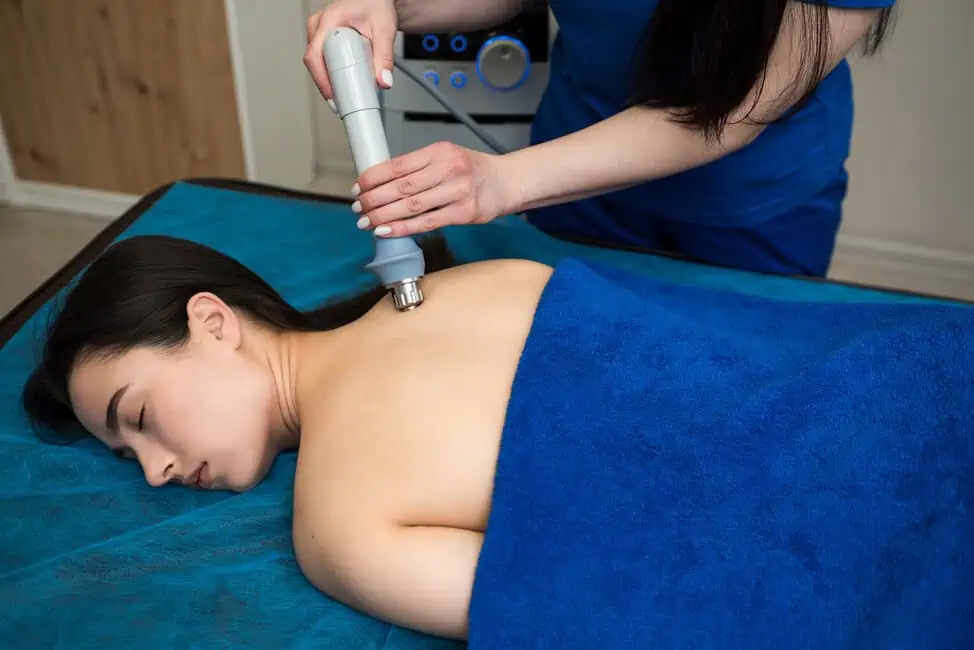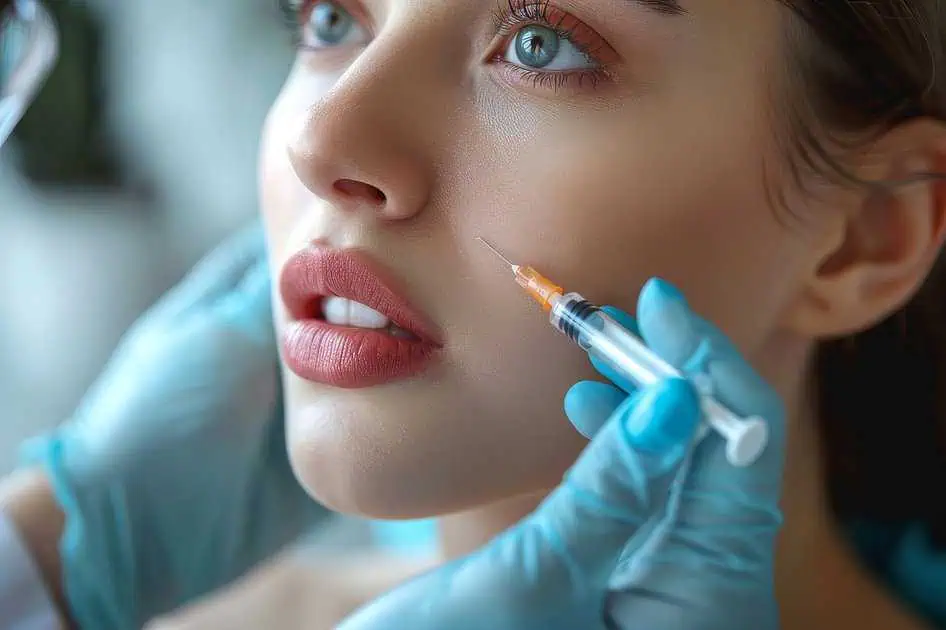Today’s cosmetic injectables offerings are diverse – creating filler confusion all over the internet! Ask a friend what they did for their frown lines, and they may not be sure themselves of what was done! If you’re considering injectables, you might think you want a botox injection but are actually looking for the results that a filler provides. So which one is the best type of injectable for you? What are the differences, the benefits, and the timeline?
Here we have created a guide so you can find answers to the typical questions that arise about the injectables we offer at Source of Health. When we’re done, you may find that the best one for you is – all of them!
So, let’s unpack this subject and give you information based on what you want and what your injector can – and should do. We’ll begin with the primary differences between Fillers, Biostimulants, and Neurotoxins (aka Botox).
Hyaluronic Acid Fillers
Hyaluronic Acid (HA) is a natural sugar that’s made in your body – you probably weren’t expecting that, were you? HA fillers are gels made from long-chain sugar molecules with different types of cross-links. Change the number of cross-links, and you get a gel that can be thinner or thicker, more or less elastic, harder or softer.
“Think of honey versus Jello,” explains our own Dr. Sorr, “One is thin and spreads – while the other is firm and doesn’t spread. All fillers fall into a spectrum that’s based on these two properties.”
The art of filler selection, placement, and use yields several benefits. When the appropriate fillers are injected below the skin’s surface, they can help restore loss of volume, smooth out and plump up fine lines and wrinkles, and enhance your face’s contours. It’s common practice to place filler in the temples, eyebrows, cheeks, midface, nose, jaw, chin, and lips – even earlobes and hands!
You may not realize that the amounts of filler used are quite tiny: One syringe full is only ⅕ of a teaspoon! Choosing the best treatment can mean weighing out the costs of this expensive substance and making sure that every drop counts. Thus, good communication with your injector is important – we’ll talk about this in greater depth below.
Biostimulants
Probably the least known of the injectable treatments, Biostimulants are known as long-lasting fillers, as they’re not made from Hyaluronic Acid. “These are one of my favorites,” Dr. Sorr shares, “and for good reason – mileage!”
Biostimulant injectables take a different pathway to achieve their longevity and results. By stimulating your skin’s collagen and elastin production, they add and restore volume, are used for structural enhancements, and more. They allow us to stimulate collagen renewal deep down to resuspend fat pads that have fallen or lost volume. At our clinic, we utilize biostimulants such as Sculptra Aesthetic and Radiesse to add volume to areas like the neck, saggy arms, knees, and buttocks.
These treatments can also include PRP. We use platelets from your blood to harness your body’s own collagen-building tools. After a small blood draw, we can produce PRP to use in direct dermal injection or use it topically with microneedling. Natural Growth factors adds a small amount of calcium to turn the PRP into a thicker gel suitable for injection.
Neuromodulators (Botox, Dysport, Xeomin)
Neuromodulators slow down the movement of muscles, helping to relax or temporarily paralyze them to soften fine lines and wrinkles. Small doses are used to deliver precise and accurate treatments. Beyond addressing cosmetics, they can offer benefits in treating conditions such as TMJ pain and migraine headaches – even acne! “By decreasing the amount of oil production and sweating,” Dr. Sorr explains, “acne can be controlled at the level of the skin.”
All of the current neuromodulators in the U.S. work the same way. Every injector will have different reasons for choosing their favorite. Here at Source of Health, we love to use Dysport, as we’ve found that it produces results more quickly and lasts longer.
Working on what is typically a quarterly schedule, we can address problem areas such as between the eyebrows, the forehead, crow’s feet, nose, lips, chin, necklines, and the “jaw clencher” muscles – the masseters.
We’ve found that neuromodulators, used in conjunction with fillers, can help extend their lifeless expression, and movement will decrease the rate of their breakdown. It’s a win-win to combine them in your treatment program.
Kybella
Kybella (Phosphatidylcholine/Deoxycholic Acid) is also known, rather dramatically, as “The Fat Melter.” This injectable influences fat cells to die and dissolves fat in a specific area. It is FDA approved for use on double chins. Typically, 2-3 treatments are required to achieve the best results. Once the fat cells are gone, it is considered permanent.
How to Find the Right Provider
Now that we have discussed types of injectables and their applications and benefits let’s discuss the process of choosing your provider. It’s important to think about your own expectations for your injectable treatments and to choose one carefully. We’ll cover this in more depth so that you’re both an informed consumer and a satisfied client after your office visits.
Most people are looking for subtle, well-placed injectables that aren’t obvious. If you’ve seen anyone who’s had too much work done – hello, Instagram! – you’re aware of what your preferences are. If you’d rather not have even your friends or significant other know that you’ve gotten injectables, you need to be on the same page with your injector. When you’re dealing with a trusted expert in the injectable field, there are some tell-tale signs to let you know that you’re in the right place.
What to Expect and What to Beware
Your provider should:
- Take clinical before-and-after pictures under the same exact lighting conditions.
- Offer education on the anatomy, aging, and skincare, by discussing skincare needs such as improvement of color, texture, and tone, as well as injectable needs such as volume loss or hollowing areas, overexpression lines (wrinkles), bone changes, and fat accumulation in the lower facial areas.
- Enter into a frank and realistic discussion of your budget and long-term plans. Businesses based on sales volume are focused on the price or offering a “Deal of the Day,” while professionals work with their clients to decide on treatment with informed consent. A great doctor, PA, or nurse injector will cover the process of receiving the procedures, talk about alternatives and risks/benefits, and happily answer questions. As most injectables are done on a 3-month, 6-month, or annual basis, you need a sound plan in place to achieve the look and feel you desire.
There should also be real talk about any behavior risks. Your medications, supplements, dental work, and activities such as flying, smoking, drinking alcohol, and exercising are all risk factors that should be assessed to ensure safe and effective treatment.
Last but not least, it’s imperative that your provider takes safety and sterility seriously and be prepared to answer questions.
What to watch out for? Remember that a great injector is focused on your results and happiness – not the size of the bill they can ring up. Conservative treatment is appropriate, always! Also, poor management or lack of guidance from a medical director can mean that a nurse might see you without proper training or even worse, someone who is practicing without a license!
A Real-Life Scenario
Now that we have covered the basics, let’s review a case study about a client, her expectations, and her treatment plan.
A 53-year old woman visited our clinic, concerned about the appearance of facial aging and volume loss. She’d had some unfortunate experiences with her previous injector, who was more concerned about the charges they were racking up than her happiness. At one visit, she received $5000 worth of fillers in her face but wasn’t pleased with the results. After returning to talk to the injector, she found them rude, unapologetic, and only willing to inject more filler – at her cost.
When the new client sat down to talk with Dr. Sorr, they discussed her overall goals and expectations, and together they decided on her treatment schedule. Their first task was to slow down and relax her forehead and eyebrow expression lines using Dysport neuromodulator injections.
After two weeks, the client progressed to a program of Sculptra Aesthetics biostimulants. This was chosen to build a long-term volume correction over the course of 3 visits scheduled 6 weeks apart. This provided a better value over using HA fillers. Lips were addressed next. Her previous filler type had migrated away from her lips, creating a mustache-like appearance. After Dr. Sorr’s thorough assessment, they selected a filler to correct her lips and restore a youthful look. She was and continues to be extremely happy and satisfied with her results.
Talking and taking the time to connect with your injector is what a healthy relationship is all about, and it’s the key to success and happiness with your looks and treatment.
Aftercare and Post-Treatment Outcomes
If you’re looking into injectables, you’re probably concerned about what happens afterward. Swelling and bruising are the most common concerns with all injections. It’s important to follow the pre-care instructions provided and avoid strenuous activity afterward for a day. Be aware that all treatments need approximately 2 weeks to take effect and settle – don’t rush to judge the final result from that procedure. It takes a great plan for great results – and a little time.
As injectables are medical treatments, there are serious risks that may occur. Complications are rare but real risks that need to be discussed before treatment is performed. If an injectable filler enters a blood vessel, for example, it could travel and block the flow, causing an occlusion – and this has been reported to happen in rare cases. HA fillers are reversible using an enzyme that will break them down. This is another good reason why going to an injector who does these treatments regularly is important.
Final Considerations
Injectables are just one of the many treatment options out there, and it’s in your best interests to visit a provider that does more than just injections. There’s often more than just appearance to consider – if the skin itself needs attention, the use of aesthetic lasers, medical peels, and topical agents are also important to discuss, as well as your total health.
At Source of Health, we deliver a holistic approach to addressing concerns that include aging. Skincare is not only about topical treatments or injectables- it is about avoiding damage from UV rays, proper sleep, and hydration, plus functional medicine to ensure the correct diet, hormones, and lifestyle treatments are also prescribed. If you’re ready to talk about injectables or any of our other client services, please contact us to schedule a Discovery Session!






